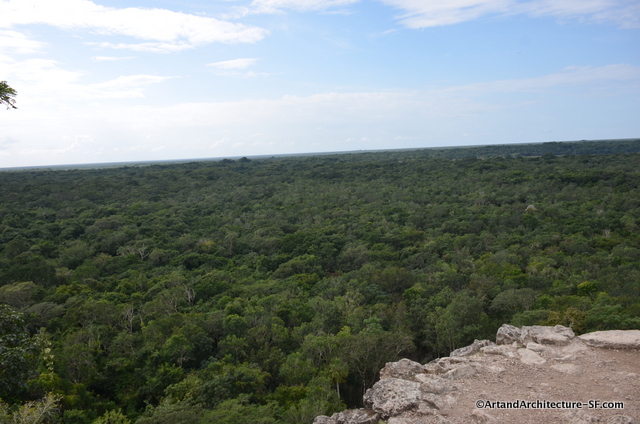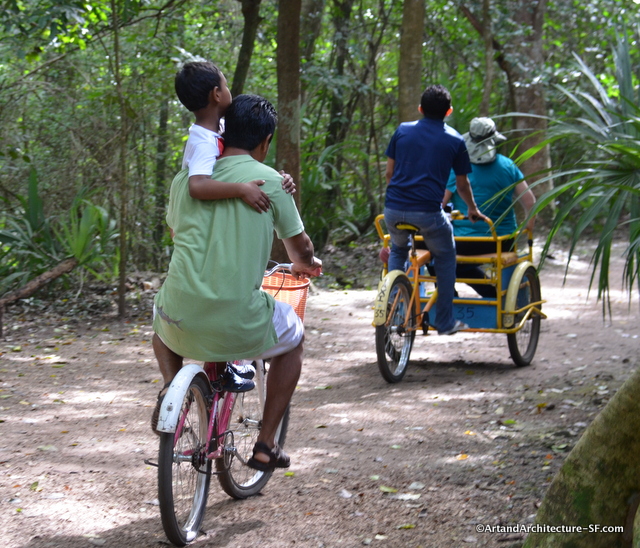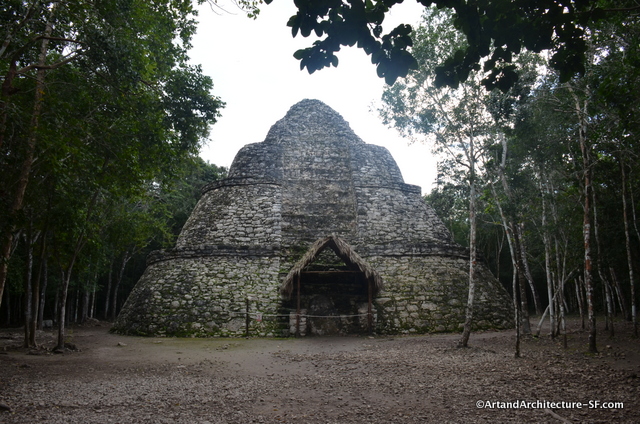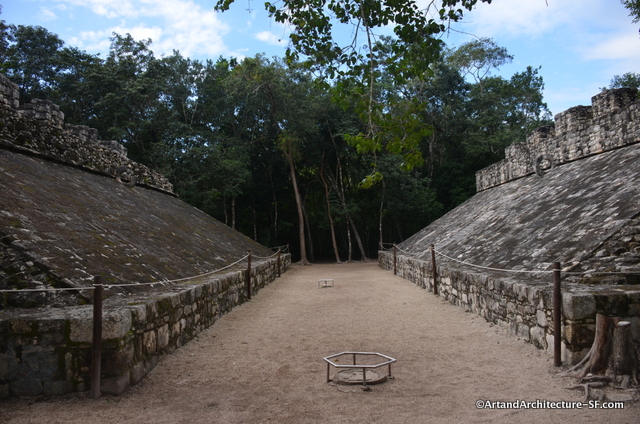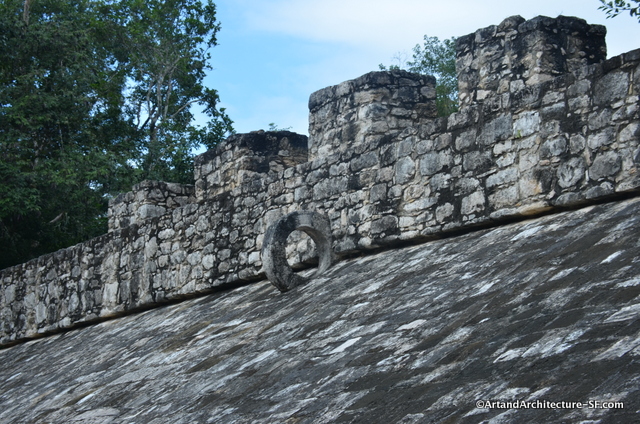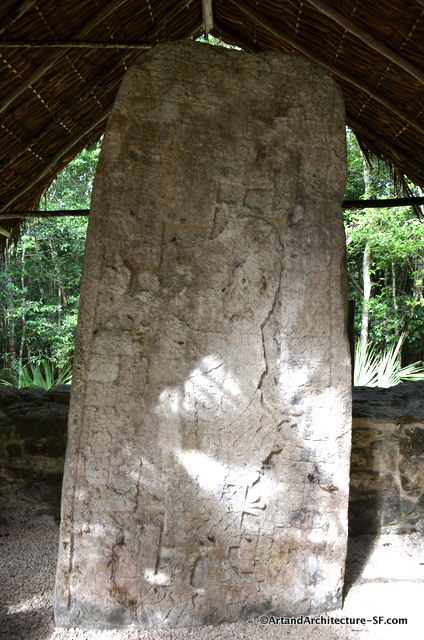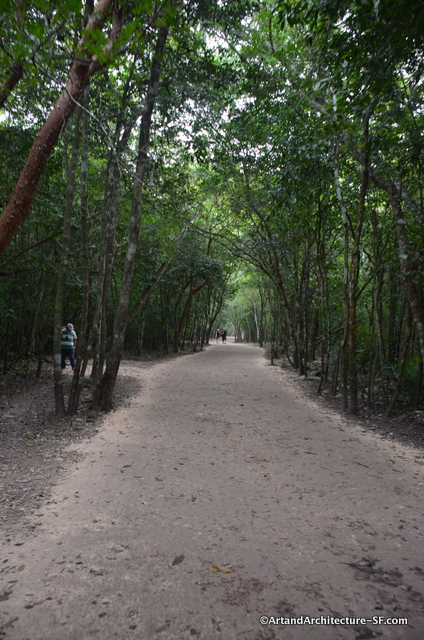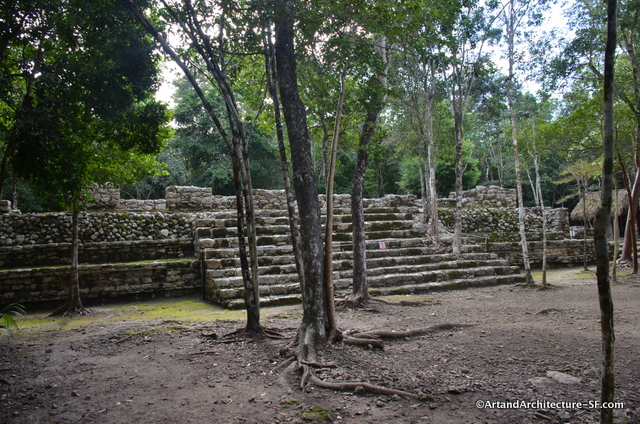January 2016
The ruins of Coba lie approximately 22 miles northwest of Tulum, in the State of Quintana Roo and remained little visited, due to its remoteness, until the first modern road was opened up in the early 1970s.
Coba is located around two lagoons, which gave it its name. Coba means ‘waters stirred by wind’ or ‘ruffled waters’. The site consists of a series of elevated stone and plaster roads that radiate out from a central site. These are known by the Maya term sacbe, or white road.
Coba was estimated to have had 50,000 inhabitants, or as many as 100,000, at the peak of its civilization, and just the built up area is thought to cover as much as 50 square miles. The site was originally a very large agricultural area during the first century with most of it growth around 500 to 900 CE. Much of the dated hieroglyphs found at the site date from the 7th century, however construction continued until at least the 14th century, and possibly as late as the arrival of the Spanish.
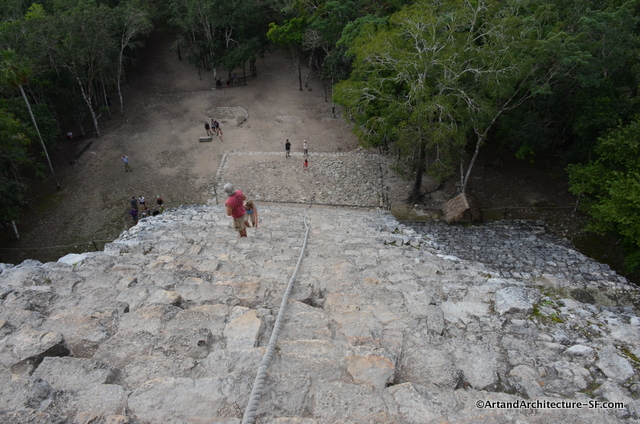 The steepness of the Nohoc Mul pyramid (the tallest in the Yucatan at over 126 feet) and the building techniques employed here are characteristic of Tikal in the Petan region of Guatemala. There are stories that a ruling queen from Coba married a priest from Tikal, which has the tallest Mayan pyramid. This may be why the architecture of the two sites is similar.
The steepness of the Nohoc Mul pyramid (the tallest in the Yucatan at over 126 feet) and the building techniques employed here are characteristic of Tikal in the Petan region of Guatemala. There are stories that a ruling queen from Coba married a priest from Tikal, which has the tallest Mayan pyramid. This may be why the architecture of the two sites is similar.
This is one of the few pyramids that one can climb in the Yucatan area, and despite its 120 steps it is well worth the effort. Once on top you can see the jungle canopy for miles, and get a true understanding as to why it took so long for modern explorers to find the ruins of the Yucatan.
You can visit Coba and enjoy the massive site in several ways. You can walk, the tree canopy keeps the area much cooler than one expects. However, after climbing the pyramid, you may find that the simple breezes are not enough to cool your core temperature down to a comfortable place.
You can also rent bicycles for your private use, or have a driver push you around in a tricycle. Much of your travels are on the same roads the Mayan tread.
Coba has a large building called Xaibe that was used as a lookout tower. This immense building is interesting in that it a square-ish shape but has rounded corners. This building has sacbeob (plural of sacbe), going out in four directions from it. These roads were kept clear of trees and because they were made with white limestone one could see a long way down these paths, even at night. The main sacbe goes almost 60 miles to the west, almost to Chichen Itza and was built before Chichen Itza existed. Of the other sacbeob at Xaibe one goes east to what is now Xcaret and another goes south to the site of Muyil, southwest of Tulum.
Of the many buildings in Coba, there are two ball courts that have been excavated. The game was called ōllamaliztli
While the rules of ōllamaliztli are not known, judging from its descendant, ulama, they were probably similar to racquetball.
The most common theory holds that the players struck the ball with their hips, although some versions allowed the use of forearms, rackets, bats, or handstones. The ball was made of solid rubber and weighed as much as nine pounds, the sizes differed greatly over time or according to the version played.
The game had important ritual aspects, and major formal ballgames were held as ritual events, often featuring human sacrifice. Although, the sport was also played casually for recreation by children and perhaps even women.
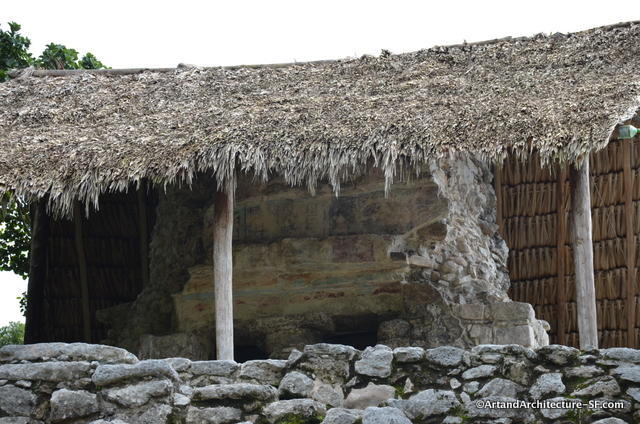
Conjunto de Pinturas -Here you can see the painted lintel on a small pyramid. You can not climb, so the view is from the ground of the pyramid.
Due to the humid climate of the region, relatively few complete Mayan paintings have survived to the present day. However important remnants have been found in substructures, hidden under later architectural additions. Mural paintings may show more or less repetitive motifs, such as varied flower symbols, scenes of daily life, or ritual scenes involving deities.
A bright turquoise blue colour – ‘Maya Blue’ – has survived through the centuries due to its unique chemical characteristics. The use of Maya Blue survived until the 16th century, when the technique was lost. The blue consists of various indigo dyes (derived from the Indigofera suffruticosa plant) and a very rare form of natural clay.
This is just one of the many buildings that make up the Macanxoc Group, just past the Conjunto de Pinturas which you find when following one of the Sacbes. This area has 8 stelaes and numerous altars. The vast number of stelaes shows that this area was of spiritual significance.
Near the entrance of Coba lies the Coba group of buildings, this particular one was for trade. The people of Coba traded extensively with other Mayan communities, particularly the ones further south along the Caribbean coast in what is now Belize and Honduras. Typical items of trade of this area were: salt, fish, squash, yams, corn, honey, beans, turkey, vegetables, chocolate drinks and raw materials such as limestone, marble, and jade. These merchants used cacao beans for currency, and the beans had a fixed market price.
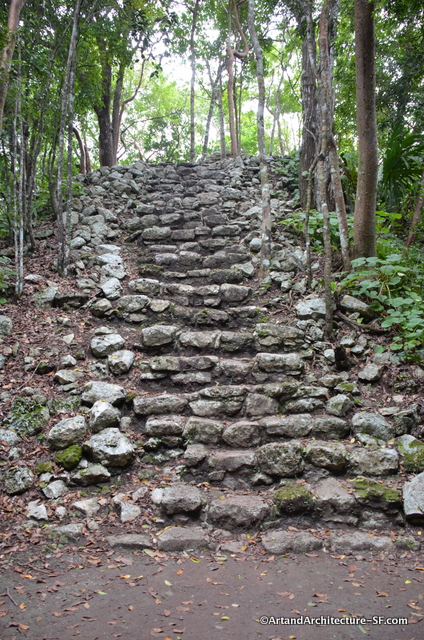 Coba is a fascinating visit, and not nearly as crowded as Tulum, due to its remoteness. There are many tours that you can take you from the resorts around the Yucatan, they run in the neighborhood of $200/person. We hired a driver in Tulum for the day (9 to 5) for $2500 pesos (less than $150). It was an air-conditioned taxi, something that you can negotiate if you are so inclined.
Coba is a fascinating visit, and not nearly as crowded as Tulum, due to its remoteness. There are many tours that you can take you from the resorts around the Yucatan, they run in the neighborhood of $200/person. We hired a driver in Tulum for the day (9 to 5) for $2500 pesos (less than $150). It was an air-conditioned taxi, something that you can negotiate if you are so inclined.
There are a few vendors at the entry to Coba, and places to purchase cold drinks or ice cream, you need to leave the actual archeological site in order to find full meals.
Keep in mind, it is always hot and humid in this part of Mexico so be prepared. There are also mosquitos everywhere so carry bug spray.

